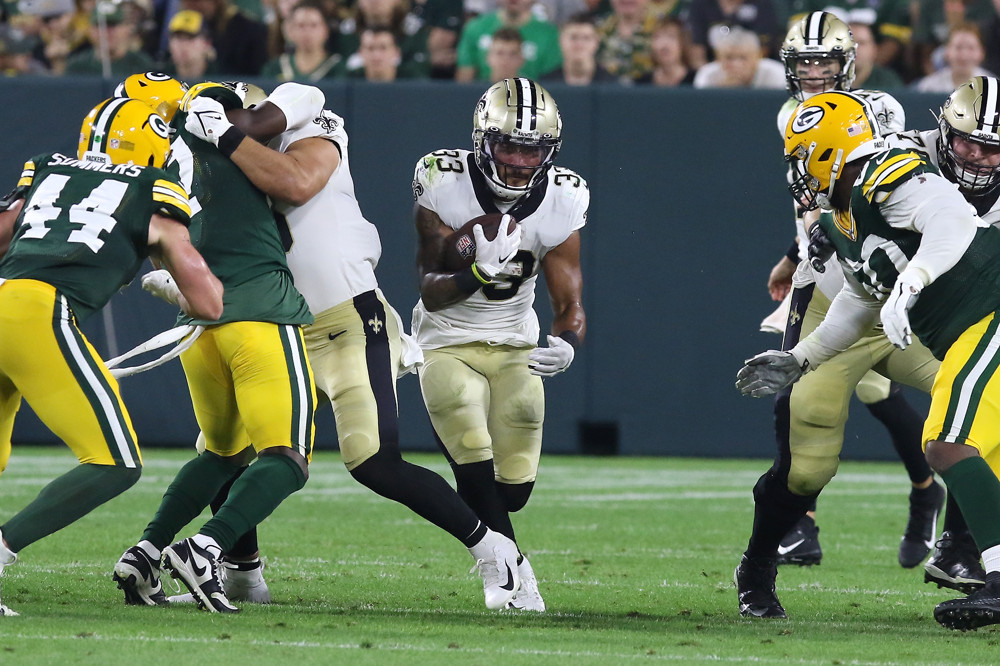The XFL is back! Starting on Feb. 18, teams will take the field with some familiar names both playing and coaching — Martavis Bryant, Hines Ward, Wade Phillips, A.J. McCarron, Brian Hill, Josh Gordon, and more.
Get in on the action with our XFL packages. We offer both weekly and full-season options. Subscribe here.
Passing Game Outlook
A relative unknown in the coaching world, Reggie Barlow will make the leap from Virginia State (NCAA Division II), where he served as head coach from 2016-2021, to the professional ranks as HC of the D.C. Defenders. Barlow brings with him OC Fred Kaiss, who served as his offensive coordinator/running backs coach during Barlow’s tenure as Alabama State’s lead man. While we’re forced to do plenty of guesswork on offensive tendencies, we do have a four-year sample with this duo calling plays for Alabama State’s offense from 2011-2014. During that stretch, Kaiss posted a paltry 38.8% pass rate en route to a 28-18 combined record. They also showed a willingness to utilize a two-QB system at times, something we should anticipate with a trio of capable signal-callers on the roster. Eric Dungey was the team’s first QB selection, though both D’Eriq King and Jordan Ta’amu were assigned later, giving the team three true dual-threat options. While a case can be made for all three to be named the Week 1 starter, I think it’s possible, maybe even likely, that a rotation develops.
With an offensive staff looking to #EstablishIt and a stable of QBs willing to use their legs whenever necessary, it may be tough to find fantasy value in the Defenders’ pass-catching corps. D.C. made Jequez Ezzard their first WR selection with the final pick of Round 2. Ezzard’s collegiate career spanned six seasons, culminating in 2021 at Sam Houston State, where he went for 41/609/6 in 10 games. The 5-foot-10, 195-pound Ezzard profiled as a slot receiver in the NFL but has experience playing both inside and on the perimeter. The Defenders used their next two picks on K.D. Cannon and Jazz Ferguson, both of whom made appearances in the XFL’s 2020 season. Boasting a 4.45 40-yard dash time, the 6-foot-5, 227-pound Ferguson is a size-speed freak relative to the level of competition he’ll face. He profiles as a traditional X receiver and should spend the majority of his time on the perimeter. Josh Hammond was taken in Round 9 and has shown an ability to play both inside and out at previous stops. During his senior season at Florida, Hammond ran 95.2% of his routes from the slot, posting a solid 19.9% TPRR. In a small three-game NFL preseason stint with the Patriots, Hammond then ran 95.2% of his routes out wide. Lucky Jackson rounds out the team’s Phase 1 WR selections in Round 11. In his final collegiate season at Western Kentucky, he posted a 24.9% TPRR en route to an eye-popping 94/1133/4 receiving line as a senior. I am tempering fantasy expectations on this unit as a whole given the possibility that the offensive environment isn’t conducive to predictable weekly performances.
Running Game Outlook
If D.C. does plan on Establishing The Run, they used the league’s first overall pick on a back capable of carrying a big workload in Abram Smith. In 2021, Smith served as Baylor’s RB1, racking up a healthy 257/1574/12 rushing line. He then signed as a 2022 UDFA with New Orleans, handling 29 rushing attempts in three NFL preseason appearances. The 5-foot-11, 221-pound back should be viewed as the frontrunner for base-down work in Kaiss’ offense. Ignoring the RB position for the next four rounds of the offensive skill-position draft, D.C. used their Round 6 pick on former Jacksonville Jaguar Ryquell Armstead. Having seen actual regular-season playing time in the NFL, Armstead could force this backfield into a two-man committee. Pooka Williams was selected in the following round, and though the team’s official roster lists him as a running back, D.C.’s social media team has taken it upon themselves to include the ever-important RB/WR distinction. Regardless of his official position, the 5-foot-9, 175-pound back is the most likely candidate to handle long-down-and-distance + two-minute situations for D.C. In his first two collegiate seasons at Kansas, Williams racked up 66/534/4 receiving before appearing in just four games in 2020. As we saw with the USFL’s New Jersey Generals, if the Defenders’ run-first plan can be executed, multiple backs in this offense can yield fruitful fantasy results.


